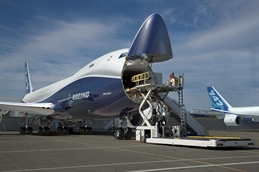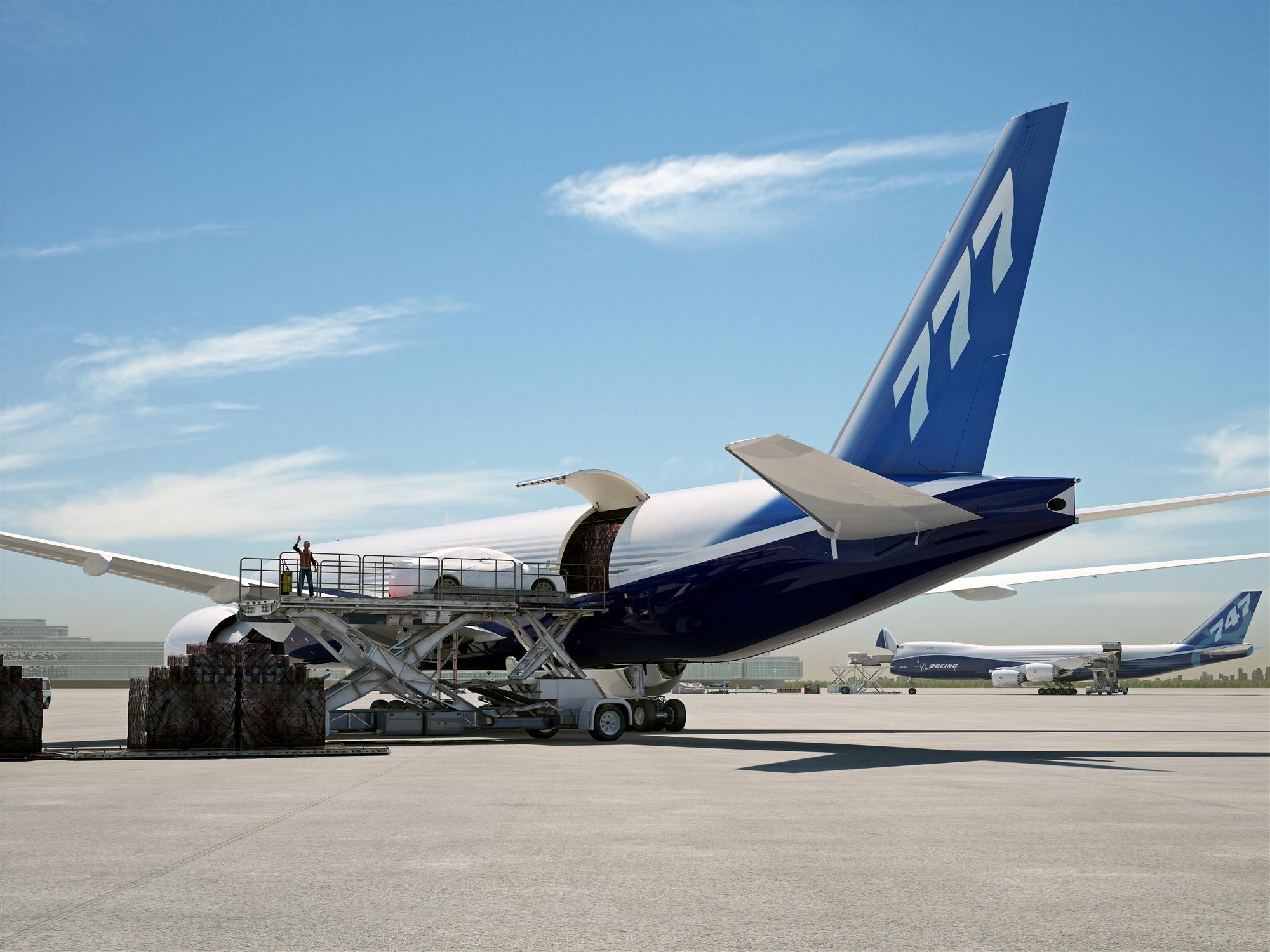
Air cargo demand will grow by about 4.2% every year over the next 20 years, with East Asia maintaining its status as the largest market by far, according to Boeing’s 2018 World Air Cargo Forecast.
“Today, about 52% of all air cargo moves to and from East Asia, and by 2037, that will grow to 60%,” said Darren Hulst, managing director of market analysis and sales support at Boeing Commercial Airplanes, presenting the biennial forecast at The International Air Cargo Association’s Air Cargo Forum and Exhibition in Toronto. “This means that of the incremental traffic that we see in the next 20 years, about 70% of the growth is coming from the East Asia market.”
Based on the cargo forecast, Boeing believes that there are about 2,650 freighters that will need to be delivered to the market over the next two decades. These will be a mix of production and converted aircraft, with the smaller airplanes being more likely to be converted. In total, there will be about 1,170 standard-body conversions the size of the 737. For medium widebodies, Boeing sees a split of about 470 production freighters and 500 conversions, and as for large freighters, there will be about 510 production airplanes.
“All of that adds up to about seven freighters every month for the next 20 years,” Hulst said. “The global fleet of dedicated freighters grows from just around 1,900 aircraft today to over 3,200 by 2037. That means that air cargo traffic will more than double, and the freighter fleet will grow by 70-75%.”
In the last three years, there has been a resurgence in the size of the fleet, whether standard-body, medium widebody or large, with all segments having increased about 3% per year since 2015. Hulst said this means that next year should see the freighter fleet eclipse the 2,000-aircraft barrier and continue the growth that it has seen over the last five years.
Hulst pointed out that another interesting element Boeing has seen in the freighter market, especially in the last five years, is not only the growth of the fleet but also replacements.
“That is an important part of our forecast as we look at production because as ageing aircraft need to be replaced, that provides even more demand for production and new converted aircraft,” he said. “Over the last four years, we’ve seen that while new-generation aircraft are now 40% of the entire large-freighter segment, almost 400 aircraft still need to be replaced. That’s why we’ll see a good mix of both growth and replacement in the marketplace going forward.”
One thing that won’t change is the importance of aircraft dedicated to transporting freight. This is especially true for the key East-West trade flows in the world such as the trans-Pacific and Asia-Europe markets, where 75% of the cargo is transported on freighters.

“Today, about 54% of all air cargo is on dedicated freighters,” said Hulst. “Our forecast for the next 20 years is 50-55%. So the maindeck freighter fleet is a valuable asset and an important part of the global fleet, and it will maintain that role.”
According to Hulst, the highest proportion that belly cargo ever achieved was just close to 50%, which was a bit of an anomaly because of a shortage of widebody freighters. Similarly, the highest number that freighters ever got was about 60%, which was caused by a shortage of overall air capacity after 9/11.
“From the way the traffic moves, we’ve seen that air cargo has specific spots that it flies in and out of, and that’s not going to change,” he said. “Passenger traffic and therefore belly capacity is expanding point-to-point but that doesn’t align with where the demand is for air cargo. We see the concentration of air cargo continuing in the big markets.”
An example of that lies in the trans-Pacific market, where the number of new non-stop city pairs by widebody passenger aircraft has more than doubled in the last 10 years.
“There’s a lot more belly capacity going across the ocean, but still 75% of the cargo traffic is flying on freighters,” Hulst said. “The passenger aircraft aren’t necessarily as cargo intensive. They’re all carrying some cargo, but not the volume.”
Of the 510 large production freighters to be delivered from now until 2037, Hulst said that most would be 777Fs because it would be easier, less costly and less risky, but he confirmed that Boeing isn’t giving up on the 747 programme, saying that any additional orders would serve as replacements for older 747Fs.
“From the 737 that can carry around 20 tonnes, all the way to the 747-8F at almost 140 tonnes of payload, we feel that we have the right products in the right market segments with the right, payload, range and, most importantly, efficiency to carry the demand today, in the near term and in the long term,” he said. “Across our line of freighters, we’ve got the lowest cost per tonne in terms of operating cost. Over 90% of the freighter capacity flying today is on a Boeing freighter.”
The planemaker is particularly encouraged by the fact that customers have been ready to order new planes as part of growth and replacement plans, signalling confidence in the market.
“Since January 2017, we’ve sold 128 freighters, including both production and converted freighters,” Hulst said. “Across the spectrum of customers, from general cargo operators, leasing companies to express carriers, the future continues to be bright in terms of the demand going forward.”
By Jeffrey Lee
Asia Cargo News | Toronto




